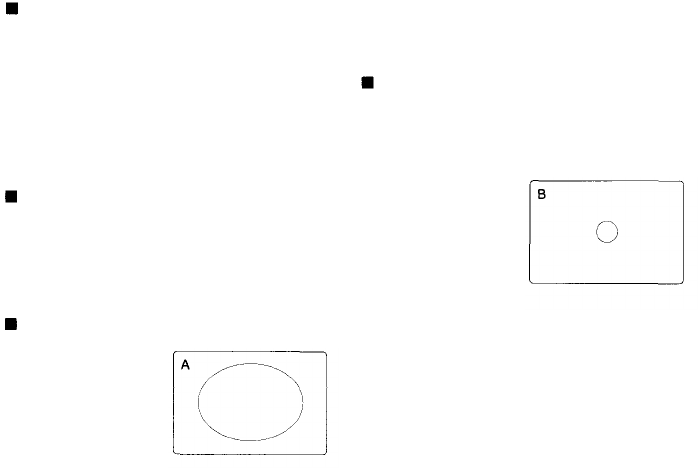
METERING THE AMOUNT OF LIGHT
Light Metering
Light metering can measure the brightness of the
framed subject in various ways. This camera
employs three metering systems: (1) ESP light
metering, (2) center-weighted average light
metering, and (3) spot metering. You can select
the light metering system most suitable to the
conditions. The camera also uses TTL (through-
the-lens) light metering to automatically measure
the light that enters the lens. This lets you get very
accurate light readings that are unaffected by
changes in the distance between the subject and
the camera.
Fuzzy Logic ESP (Electro-Selective Pattern) Light
Metering
ESP light metering measures the brightness of the
central portion and peripheral portion of the frame
separately in order to determine the proper
exposure. The calculation program used is based
on programmed data to properly compensate for
backlighting. ESP light metering is used
automatically when in the Full-Auto mode.
Center-Weighted Average Light Metering
Center-weighted average light metering is the most
widely used light metering
system (Fig. A). This
system measures the light
available throughout the
frame with special
emphasis on the center of
the frame. When in the
Aperture-Preferred mode, this light metering
system is automatically activated. When the
contrast between bright and dark areas is not too
extreme outside the center of the frame, this
system offers excellent results.
Spot Metering
Spot metering (Fig. B) measures the brightness at
the center of the frame only. Because this metering
system calculates the correct exposure for only one
point, it is convenient when the subject is backlit or
the picture contains strong contrasts. When
shooting a subject in front of an extremely bright
background, you should
use spot-metering on the
subject's face.
47


















